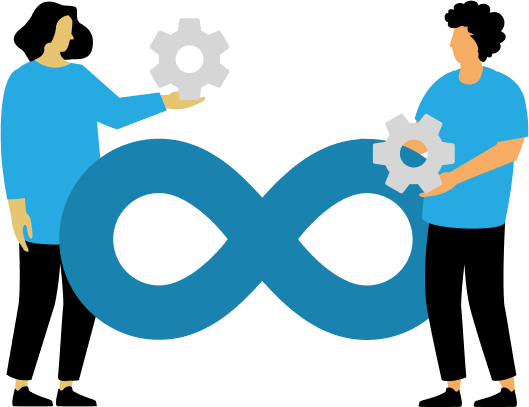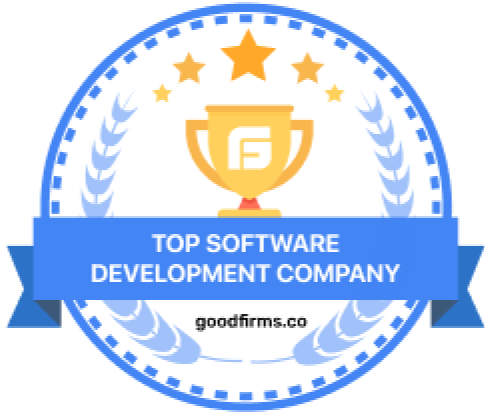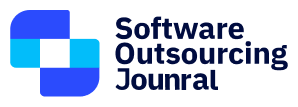You might find it challenging to launch your product quickly. With various departments involved, you’ll need to divide your time effectively. Plus, there could be other factors like the need for media space to advertise your product, which can impact your launch.
To speed up your product’s delivery, you need clear visibility into each department’s needs and deadlines. Understanding how every team and project phase fits together helps you identify risks and blockers in advance, allowing you to accelerate product development.
Let’s drill down on how you can improve your product’s speed to market.
How Can You Speed to Market Product Delivery?
A company’s success really hinges on keeping promises to both shareholders and customers. That’s why launching a product on time to market is such a taxing feat.
Throughout product development, you’ll likely encounter numerous obstacles—some anticipated but many unexpected. These hurdles can significantly slow down progress.
Here are the top 6 steps that, when followed correctly, can help you accelerate product development without compromising on quality.
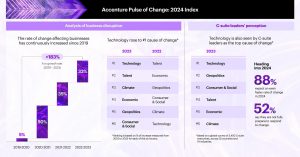
1. Have a Clear Product Development Strategy
Starting with a solid strategy to accelerate product development is something you can’t ignore at any cost. You MUST have things figured out as to why you’re developing the app in the first place.
Let’s take a crude example, if you’re aiming to release an app by Christmas, it has to be ready by Christmas—not January. Or, if you’re developing an app to facilitate seamless train switching between stations, precision in coding is paramount. You can’t risk software failures causing train accidents. In this case, ensuring bug-free code takes precedence over meeting deadlines.
Before diving into development, map out a comprehensive roadmap that covers all steps from initial iterations to the final launch.
There are three main tactics to consider for your speed to market product development strategy. Let’s dive into those:
A. Identifying the Market
Before launching any product, it’s super important to check if your users will actually like it. You can run surveys, dive into community forums, and use social media to get a feel for what your audience wants.
Here’s what to keep in mind while getting to know your audience for speed to market:
1) What does your target audience need?
First, you get to know the people who’ll be using your product. You can start by understanding their needs will help you shape your app to fit what they’re looking for.
2) What are the benefits of the new product?
Think about how your product can solve a problem for users. For example, if your restaurant app could show where ingredients are sourced and their health benefits, it would meet a common user’s desire.
3) Will the product fit into the current market?
Research will help you figure out if your product idea is still relevant or if it’s outdated. This way, you can focus on what people really want.
4) What features should you include in your product?
Researching users’ likes and interests will help you incorporate features they’ll actually use. The end result? A lightweight, feature-rich product that users will love.
B. Setting a Time to Market Frame
Pinning down a release date for your product is crucial. It helps you allocate tasks to your team and set clear milestones for each development phase. Picking the right team members is key, too—timely delivery often hinges on their expertise and coordination.
Efficiency and teamwork are like close cousins to hit your target launch date before your competition does. Make sure the launch date you choose aligns with the product’s features, user needs, and the skills of your team. Thus ensuring speed to market.
C. Choosing Key Strategies
When it comes to product planning and launching, having a few key strategies can make a big difference. Here are some essential ones to consider for speed to market:
Wireframes and Prototypes
Before diving into the actual design, it’s crucial to start with wireframes or prototypes. Think of these as rough sketches of your app. They help UX designers visualize the layout, features, and functionality of the app. These early drafts are like a bridge between your initial idea and the finished product, allowing you to refine the user experience and design.
Product Specifications
Clear product specifications are a must. They should detail everything about the app—like pricing, design features, functionalities, and marketing plans. This documentation needs to be thorough because different teams will rely on it. Any ambiguity can lead to delays and unnecessary fixes, so it’s important to be as clear as possible from the start.
Define Testing strategy
The speed to market product development team must go through testing strategies that are both time-saving and effective. They have to choose a Test Automation Suite consisting of frameworks like Selenium, Appium, Loadrunner, jMeter, etc., which helps conduct parallel tests, including Regression and Performance testing.
Choosing Your Development Team
Now, let’s talk about picking the right development team for your project. Outsourcing to a skilled engineering team can make things better to get your high-quality product to market on schedule.
In-house developers can get expensive and might not always be practical. Outsourcing offers a savvy solution. It can help save money, speed up your project, and spark innovation. The right team can make a huge difference in bringing your vision to life.
2. Agile Methodology
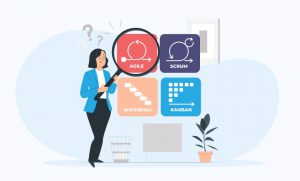
One of the smartest methodologies out there is Agile. It’s based on these 12 core principles, the Agile Manifesto, that emphasizes flexibility and collaboration. Agile breaks your project down into bite-sized chunks, each lasting a few weeks (typically 2-8).
So, what makes Agile so awesome? It keeps everyone – stakeholders, clients, the whole crew – in the loop every step of the way. This means you can make smart decisions as the project unfolds based on real-time progress. Plus, if getting your product out there fast is a priority, Agile lets you launch a basic version early and keep refining it with each update.
You can launch a Minimum Viable Product (MVP) with just the core features. The beauty of Agile is that your whole team can talk, swap ideas, and fix problems right away.
This speed to market methodology is faster than traditional methods like Waterfall because tasks can be worked on in parallel rather than sequentially.
Check out our blog on Agile vs Waterfall.
3. Regular Automated Testing
Whenever you update your code, you’ve got to test it on all platforms. Manual testing is thorough but can be slow, labor-intensive, and expensive. Let us show a better option with a comparison and benefits.
Manual vs. Automated Testing
That’s where automated testing shines. Instead of spending days or weeks, automation can complete testing in just a few hours. It not only saves time but also provides a deeper look into how your software is performing—something that’s hard to achieve with manual testing, which requires constant attention.
Benefits of Automated Testing
Automated testing gives you a detailed view of your code’s behavior, including memory use, data tables, and internal processes. This boosts accuracy and efficiency. You can use various automated tests like unit testing, functional testing, and regression testing based on what you need.
Adding new features? Regression testing with automation ensures everything still works correctly. Plus, automated tests can be repeated as often as needed without extra delays, making it easier to spot and fix issues quickly.
Parallel Testing
Parallel testing is another big win with automation and speed to market. It lets you run multiple test cases at once across different operating systems and browsers, cutting down testing time compared to doing it one at a time on a single machine.
You can hire QA Automation Engineers here.
4. Picking the Right Software Development Technologies
The right tech for your software project has a lot to consider. With so many technologies available, picking the wrong one can lead to roadblocks and delay your product launch.
The Application Development Environment (ADE) is key. Developers spend a lot of time with their ADE, so it’s useful to pick one that supports multiple platforms and integrates well with measurement and control services. A good ADE should also jack up your app’s presentation and reporting features and offer global training and support.
Here are some tips for choosing the right technology for speed to market:
- Be updated on the latest industry trends.
- Make sure the technology is suited to accelerate product development.
- Understand where the technology stands in its adoption lifecycle.
- Check if the technology is open source.
- Consider the long-term costs associated with the technology.
- Determine if the technology allows for easy porting to other platforms.
- Evaluate the technology’s performance and flexibility.
- Explore whether third-party code can be leveraged for additional benefits.
5. Documentation
Documentation is like the roadmap for your software development project. It outlines the architecture and functionality, and it’s meant for everyone involved—from designers and developers to testers and end users.
Good documentation boosts software quality. It helps teams establish clear best practices and keeps track of the project’s progress. When documentation is clear and straightforward, it can actually speed up development by helping everyone agree on how to implement features.
Plus, having solid documentation is a lifesaver for new developers. It saves time and money since they can dive right into the project without needing a lot of training. And with well-documented error codes and FAQs, troubleshooting becomes a lot easier for everyone.
Documentation can be mainly:
A. Design Documentation
Design documentation is all about giving your team a clear picture of how the final product should look and feel. It includes both narrative and graphical details on the software’s appearance and behavior. This helps everyone on the team stay on the same page, makes it easier for users to understand, and generally simplifies the whole process of speed to market.
B. Technical Documentation
Technical documentation makes sure your software development runs smoothly. It dives deep into the software’s architecture and functionality, and it’s used by developers, designers, and quality analysts.
For larger projects, this kind of documentation is crucial to keep everything organized. It details how different parts of the software work, including API calls and responses, and provides a thorough overview of the code. Sticking to best speed to market practices here is key, especially when dealing with your own and third-party APIs.
C. User Documentation
User documentation is all about helping your users understand how your software works. Often, developers assume users know how the software operates, so they might skip over the essentials. This can be a problem if the user isn’t familiar with the technical jargon.
When creating user documentation, make sure it’s clear and easy to understand. A well-organized layout is key so users can quickly find what they need. Think of it like the documentation you see for WordPress or Bootstrap—simple and user-friendly.
D. Marketing Documentation
Marketing documentation provides an overview of what the software delivers and its return on investment (ROI). It’s a valuable tool for marketing your product and helps ensure that the software’s quality and benefits are clearly communicated. It supports both the marketing process and the software’s overall success and speed to market.
6. Removing Unused Code

Getting rid of unused code is super important for keeping your software development smooth. In big projects, especially complicated ones, code can pass through many hands—sometimes even new developers. They might accidentally mess with old, unused code, which can introduce unexpected bugs.
Think of unused code as clutter in a room. If you don’t clear it out, it just creates confusion and makes everything messier. Since you’ll unlikely ever use that old code again, it’s best to get rid of it.
Everyone on the team should know what’s active and what’s not. Cleaning up the code helps with the speed of development and boosts the overall quality of your software.
Conclusion: Leverage Speed to Market Strategy
Companies need to focus on speeding up their product launches to stay ahead of the game. Tackling product delays involves paying attention to a few key areas: parallel testing, Agile methods, solid documentation, and choosing the right technologies. With the right resources, your development team can get your project off the ground successfully.
It’s also useful to use the speed to market strategies that we discussed to gain a marketing edge and secure a competitive position. Sometimes, being first to market can be a matter of survival. And remember, while the speed of development is important, you must also keep a strong focus on maintaining high quality throughout the development process.
Want to accelerate product development and launch your product on time? Come, talk to us; we can guide you.

Start a Project with Ajackus













































